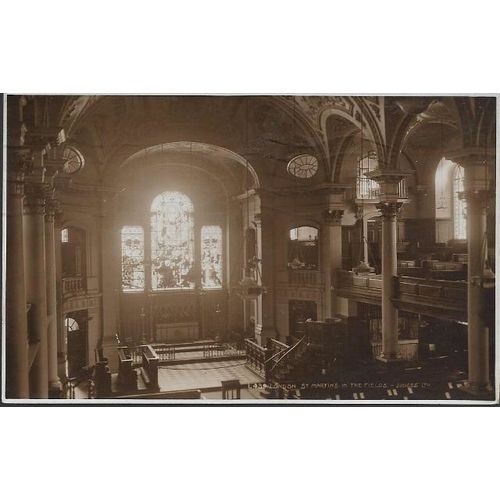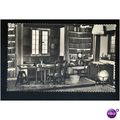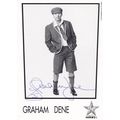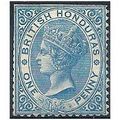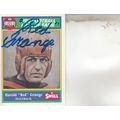London - St. Martin in the Fields Church, Trafalgar Sq - Judges 1929 pmk
- Condition : Used
- Dispatch : 2 Days
- Brand : None
- ID# : 179574194
- Quantity : 1 item
- Views : 179
- Location : United Kingdom

- Seller : justthebook (+1699)
- Barcode : None
- Start : Fri 12 Apr 2019 14:08:21 (EDT)
- Close : Run Until Sold
- Remain : Run Until Sold
Checks/Cheques
 for 1 item(s) edit
for 1 item(s) edit
Shipping Calculator
More Listings from This Seller view all
Seller's Description
- Postcard
- Picture / Image: London - St. Martin in the Fields [Trafalgar Square]
- Publisher: Judges (L439)
- Postally used: yes
- Stamp: George V 1&half d brown
- Postmark(s): Norwood 1929 wavy line
- Sent to: Madame ..., Westminster Bank, 22 Place Vendome, Paris
- Notes / condition:
Please ask if you need any other information and I will do the best I can to answer.
Image may be low res for illustrative purposes - if you need a higher definition image then please contact me and I may be able to send one. No cards have been trimmed (unless stated).
------------------------------------------------
Postage & Packing:
Postage and packing charge should be showing for your location (contact if not sure).
No additional charges for more than one postcard. You can buy as many postcards from me as you like and you will just pay the fee above once. Please wait for combined invoice. (If buying postcards with other things such as books, please contact or wait for invoice before paying).
Payment Methods:
UK - PayPal, Cheque (from UK bank) or postal order
Outside UK: PayPal ONLY (unless otherwise stated) please. NO non-UK currency checks or money orders (sorry).
NOTE: All postcards are sent in brand new stiffened envelopes which I have bought for the task. These are specially made to protect postcards and you may be able to re-use them. In addition there are other costs to sending so the above charge is not just for the stamp!
I will give a full refund if you are not fully satisfied with the postcard.
----------------------------------------------
Text from the free encyclopedia WIKIPEDIA may appear below to give a little background information (internal links may not work) :
*************
St Martin-in-the-Fields is an English Anglican church at the north-east corner of Trafalgar Square in the City of Westminster, London. It is dedicated to Saint Martin of Tours. There has been a church on the site since the medieval period. The present building was constructed in a Neoclassical design by James Gibbs in 1722–1726.
Excavations at the site in 2006 led to the discovery of a grave from about 410 AD.[3] The site is outside the city limits of Roman London (as was the usual Roman practice for burials) but is particularly interesting for being so far outside, and this is leading to a reappraisal of Westminster's importance at that time. The burial is thought by some to mark a Christian centre of that time (possibly reusing the site or building of a pagan temple[citation needed])
The earliest extant reference to the church is from 1222, with a dispute between the Abbot of Westminster and the Bishop of London as to who had control over it. The Archbishop of Canterbury decided in favour of Westminster, and the monks of Westminster Abbey began to use it.[4]
Henry VIII rebuilt the church in 1542 to keep plague victims in the area from having to pass through his Palace of Whitehall. At this time, it was literally "in the fields", an isolated position between the cities of Westminster and London.
By the beginning of the reign of James I, the church had become inadequate for the size of its congregation, due to the great increase in population in the area. In 1606 the king granted an acre of ground to the west of St. Martin's Lane for a new churchyard,[5] and the building was enlarged eastwards over the old burial ground, increasing the length of the church by about half.[6] At the same time the church was, in the phrase of the time, thoroughly "repaired and beautified".[6] Later in the 17th century capacity was further increased with the addition of galleries. The creation of the new parishes of St Anne, Soho, and St James, Piccadilly, and the opening of a chapel in Oxenden Street also relieved some of the pressure on space.[5]
As it stood at the beginning of the 18th century, the church was built of brick, rendered over, with stone facings. The roof was tiled, and there was a stone tower, with buttresses. The ceiling was slightly arched,[6] supported with what Edward Hatton described as "Pillars of the Tuscan and Modern Gothick orders".[6] The interior was wainscotted in oak to a height of 6 ft (1.8 m), while the galleries, on the north, south and west sides, were of painted deal.[6] The church was about 84 ft (26 m) long and 62 ft (19 m) wide. The tower was about 90 ft (27 m) high.[6]
A number of notables were buried in this phase of the church, including Robert Boyle, Nell Gwynne, John Parkinson and Sir John Birkenhead.
A survey of 1710 found that the walls and roof were in a state of decay. In 1720, Parliament passed an act for the rebuilding of the church allowing for a sum of up to £22,000, to be raised by a rate on the parishioners. A temporary church was erected partly on the churchyard and partly on ground in Lancaster Court. Advertisements were placed in the newspapers that bodies and monuments of those buried in the church or churchyard could be taken away for reinterment by relatives.[5]
The rebuilding commissioners selected James Gibbs to design the new church. His first suggestion was for a church with a circular nave and domed ceiling,[7] but the commissioners considered this scheme too expensive. Gibbs then produced a simpler, rectilinear plan, which they accepted. The foundation stone was laid on 19 March 1722, and the last stone of the spire was placed into position in December 1724. The total cost was £33,661 including the architect's fees.[5]
The west front of St Martin's has a portico with a pediment supported by a giant order of Corinthian columns, six wide. The order is continued around the church by pilasters. In designing the church, Gibbs drew upon the works of Christopher Wren, but departed from Wren's practice in his integration of the tower into the church. Rather than considering it as an adjunct to the main body of the building, he constructed it within the west wall, so that it rises above the roof, immediately behind the portico,[7] an arrangement also used at around the same time by John James at St George, Hanover Square (completed in 1724), although James' steeple is much less ambitious.[7] The spire of St Martin's rises 192 ft (59 m) above the level of the church floor.[5]
The church is rectangular in plan, with the five-bay nave divided from the aisles by arcades of Corinthian columns. There are galleries over both aisles and at the west end. The nave ceiling is a flattened barrel vault, divided into panels by ribs. The panels are decorated in stucco with cherubs, clouds, shells and scroll work, executed by Giuseppe Artari and Giovanni Bagutti.[5]
Until the creation of Trafalgar Square in the 1820s, Gibbs's church was crowded by other buildings. J.P. Malcolm, writing in 1807, said that the its west front "would have a grand effect if the execrable watch-house and sheds before it were removed" and described the sides of the church as "lost in courts, where houses approach them almost to contact".[8]
The design was criticised widely at the time, but subsequently became extremely famous, being copied particularly widely in the United States.[9] In Britain, the design of the 1830s St Andrew's in the Square church in Glasgow was inspired by it. In India, St. Andrew's Church, Egmore, Madras (now Chennai), is modelled on St Martin-in-the-Fields.
Various notables were soon buried in the new church, including the émigré sculptor Louis-François Roubiliac (who had settled in this area of London) and the furniture-maker Thomas Chippendale (whose workshop was in the same street as the church, St Martin's Lane[10]), along with Jack Sheppard in the adjoining churchyard. This churchyard, which lay to the south of the church, was removed to make way for Duncannon Street, constructed in the 19th century to provide access to the newly created Trafalgar Square.[11]
Before embarking for the Middle East Campaign, Edmund Allenby was met by General Beauvoir de Lisle at the Grosvenor Hotel and convinced General Allenby with Bible prophecies of the deliverance of Jerusalem. He told General Allenby that the Bible said that Jerusalem would be delivered in that very year, 1917, and by Great Britain. General Beauvoir de Lisle had studied the prophecies, as he was about to preach at St Martin-in-the-Fields.[12]
Listing Information
| Listing Type | Gallery Listing |
| Listing ID# | 179574194 |
| Start Time | Fri 12 Apr 2019 14:08:21 (EDT) |
| Close Time | Run Until Sold |
| Starting Bid | Fixed Price (no bidding) |
| Item Condition | Used |
| Bids | 0 |
| Views | 179 |
| Dispatch Time | 2 Days |
| Quantity | 1 |
| Location | United Kingdom |
| Auto Extend | No |


